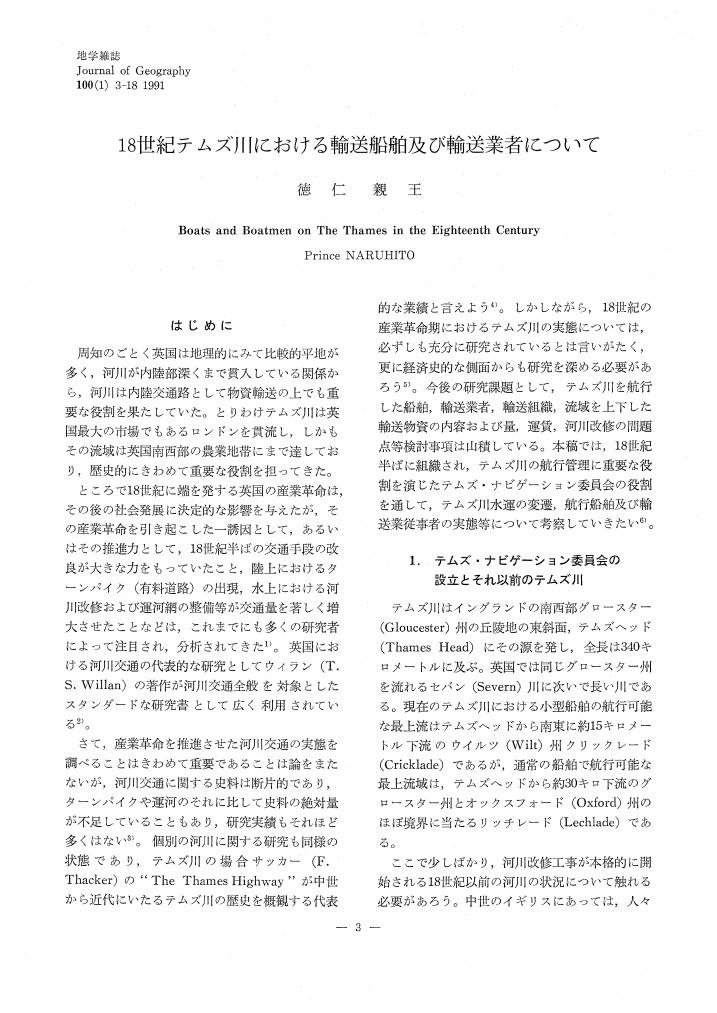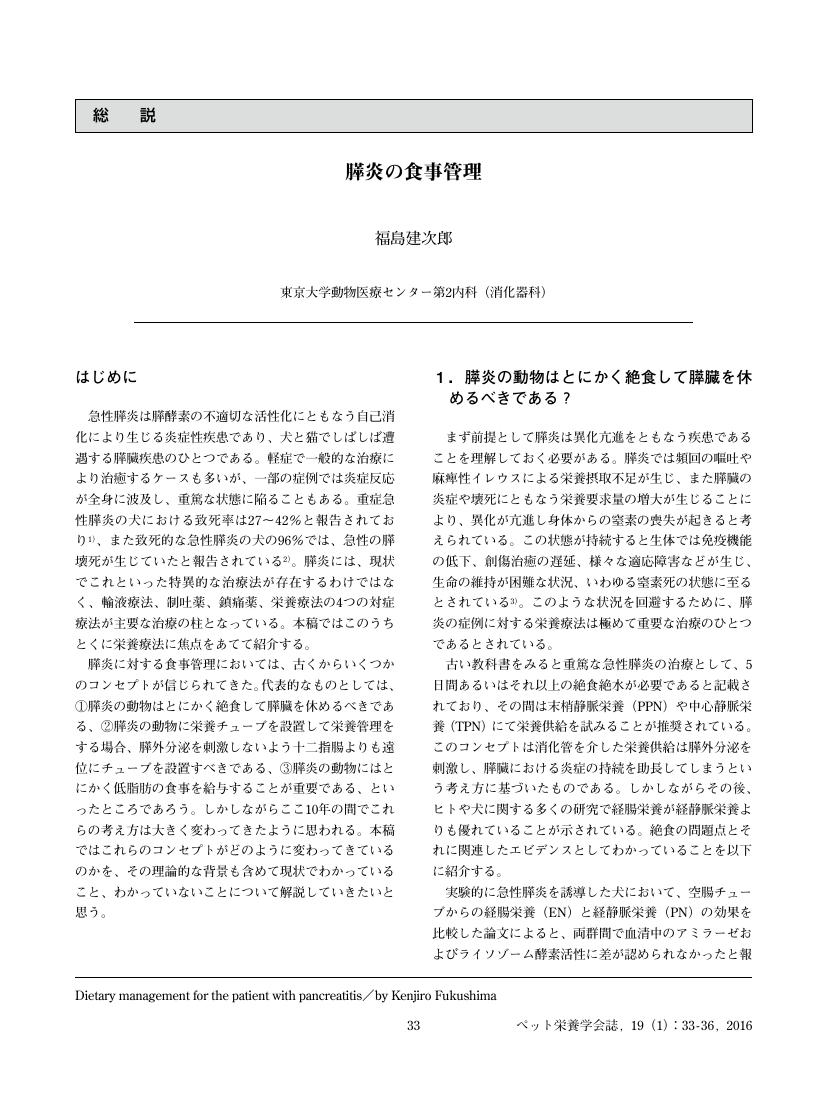167 0 0 0 OA 18世紀テムズ川における輸送船舶及び輸送業者について
- 著者
- 徳仁親王
- 出版者
- Tokyo Geographical Society
- 雑誌
- 地学雑誌 (ISSN:0022135X)
- 巻号頁・発行日
- vol.100, no.1, pp.3-18, 1991-02-25 (Released:2014-02-21)
- 参考文献数
- 62
167 0 0 0 OA 性別が間接互恵性に与える影響の推定
- 著者
- 赤石 仁 中野 光臣
- 雑誌
- 研究報告知能システム(ICS) (ISSN:2188885X)
- 巻号頁・発行日
- vol.2018-ICS-191, no.9, pp.1-4, 2018-03-19
利他的行動を生み出す機構の一つとして間接互恵性が知られている.この間接互恵性のゲーム理論的モデルとして,ドネーションゲームが広く用いられてきた.本研究では,性別が間接互恵性へ与える影響を,実際の人間によって行われるドネーションゲームを用いて検討する.実験では,まず,学生男女 10 名で実際にゲームを行い,その結果から,間接互恵性における性別による判断の偏りを推定する.その結果,男性から女性に対して利他的行動が行われる基準は低く,逆に女性から男性に対しての基準は高くなる傾向が示された.
167 0 0 0 OA 食卓へのプロジェクションマッピングによる食の知覚と認知の変容 ~天ぷらを例題として~
- 著者
- 鳴海 拓志 松尾 宇人 櫻井 翔 谷川 智洋 廣瀬 通孝
- 出版者
- 特定非営利活動法人 日本バーチャルリアリティ学会
- 雑誌
- 日本バーチャルリアリティ学会論文誌 (ISSN:1344011X)
- 巻号頁・発行日
- vol.23, no.2, pp.65-74, 2018 (Released:2018-06-30)
- 参考文献数
- 26
Projection mapping to the dining table has been introduced in multiple restaurants. Does this kind of change in eating environment with projection mapping work only for entertainment? In this study, we examined whether changes in eating environment with projection mapping actually change the thermal/olfactory/taste perception and palatability of food. Tempura was chosen as a food, which has distinctive texture, aroma and taste, and has a strong tie with a specific eating environment in Japan, and a projection mapping system was constructed to project images and sounds to simulate a counter in a tempura restaurant around tempura. Through two experiments using this system, we suggested that the aroma, temperature, taste strength and palatability of the tempura improved by the effect of the projection mapping. We also suggested that the linguistic information related to tempura also enhances these perception, but the effect is weaker than the one of change in eating environment with projection mapping. These results suggested that change in eating environment with projection mapping helps to perceive the sensory information expected to be obtained in the environment.
167 0 0 0 OA 新規HPVワクチン関連神経免疫異常症候群モデルマウスを用いた病態発症機構の解析
ヒトパピローマウィルス (HPV) の持続感染は妊娠を妨げ、若い女性の死因の上位である子宮頸がんの病因である。HPV ワクチンが開発され感染予防に効果を示す一方で、有害な副反応が報告されており、我々は同症候群をHANS と名付けた。HANS の病因・病態を明らかにするため、HPV ワクチンを用いて HANS モデルマウスを作製し、同マウスはHANS 様表現型として運動機能および脳の組織学的異常を示した。さらにワクチン作用機序および宿主反応メカニズムを明らかにするため、同マウスの脳、血液中の発現因子の変化を検討した。その結果 HANS 患者と同様に自己免疫疾患関連因子の活性化が示唆された。
166 0 0 0 OA 官報
- 著者
- 大蔵省印刷局 [編]
- 出版者
- 日本マイクロ写真
- 巻号頁・発行日
- vol.1900年11月22日, 1900-11-22
166 0 0 0 OA ボールペンにおける最近の精密加工技術について —ナノメートルチップ加工への挑戦—
- 著者
- 早乙女 辰男
- 出版者
- 公益社団法人 精密工学会
- 雑誌
- 精密工学会誌 (ISSN:09120289)
- 巻号頁・発行日
- vol.73, no.1, pp.23-27, 2007 (Released:2009-06-03)
- 被引用文献数
- 2 1
166 0 0 0 OA 現代ドイツにおける種を超えた恋愛とセックス
- 著者
- 濱野 千尋
- 出版者
- 日本文化人類学会
- 雑誌
- 日本文化人類学会研究大会発表要旨集 日本文化人類学会第52回研究大会 (ISSN:21897964)
- 巻号頁・発行日
- pp.161, 2018 (Released:2018-05-22)
2016年の秋および2017年の夏の合計4か月間、ドイツにて行った動物性愛者たちへの調査から得られた事例を通して、人間と動物の恋愛とセックス、および動物性愛というセクシュアリティの文化的広がりについて考察する。異種間恋愛に見られる人間と動物の関係をダナ・ハラウェイの伴侶種概念を基盤に説明するとともに、動物性愛者のセックスが抑圧から脱する可能性を検討したい。
165 0 0 0 OA ロシア ロシア連邦憲法の改正
- 著者
- 大河原健太郎
- 出版者
- 国立国会図書館
- 雑誌
- 外国の立法 : 立法情報・翻訳・解説 (ISSN:13492071)
- 巻号頁・発行日
- vol.(月刊版. 287-2), 2021-05
165 0 0 0 OA 草津白根火山の噴火史
- 著者
- 早川 由紀夫 由井 将雄
- 出版者
- Japan Association for Quaternary Research
- 雑誌
- 第四紀研究 (ISSN:04182642)
- 巻号頁・発行日
- vol.28, no.1, pp.1-17, 1989-05-31 (Released:2009-08-21)
- 参考文献数
- 23
- 被引用文献数
- 22 23
The eruptive history of the Kusatsu Shirane volcano is well described by means of 14 beds of key tephra and intercalating loess soil. Three eruptive stages are recognized. During early or middle Pleistocene the Matsuozawa volcano was formed; this is the first stage. The second stage was initiated by effusion of the Horaguchi lava, which was followed by eruptions of the Oshi pyroclastic flow, older lava flows, 3P pumice fall, and Yazawahara pyroclastic flow. Brown loess soil about 10m thick covering these deposits indicates that a dormant period of more than 100, 000 years followed this stage. The summit area upheaved about 400m or more against the foot of the volcano during this period, as is suggested by the extraordinarily steep (6.1°-3.0°) surface of the Oshi ignimbrite plateau. The third stage, which started about 14, 000 years ago, is the formation of three pyroclastic cones on the summit and contemporaneous effusion of the younger lava flows, e. g. the Kagusa lava of 7, 000 years ago and the Sessyo lava of 3, 000 years ago. In historic times, phreatic explosions have frequently occurred on the summit crater, Yugama. This means that the present belongs to the third stage. It is unlikely that eruptions of the third stage are caused by cooling of the magma chamber which was active in the second stage. The activity of the third stage seems to denote arrival of a new magma chamber at shallow depth.
165 0 0 0 OA 膵炎の食事管理
- 著者
- 福島 建次郎
- 出版者
- 日本ペット栄養学会
- 雑誌
- ペット栄養学会誌 (ISSN:13443763)
- 巻号頁・発行日
- vol.19, no.1, pp.33-36, 2016-04-09 (Released:2016-06-01)
- 参考文献数
- 16
165 0 0 0 OA 優生手術(強制不妊化)とリプロダクティブ・ヘルス/ライツ : 被害者の経験から
- 著者
- 大橋 由香子 Yukako OHASHI
- 出版者
- フェリス女学院大学国際交流学部紀要委員会
- 雑誌
- 国際交流研究 : 国際交流学部紀要 (ISSN:13447211)
- 巻号頁・発行日
- vol.23, pp.111-133, 2021-03
165 0 0 0 OA 諫早庸一「書評 宮紀子『モンゴル時代の「知」の東西』」に対する疑義
- 著者
- 宮 紀子 ミヤ ノリコ Noriko Miya
- 雑誌
- 史苑
- 巻号頁・発行日
- vol.80, no.1, pp.131-148, 2020-02
165 0 0 0 OA 古代服裁縫之秘書
- 著者
- 高橋貴四郎 著
- 出版者
- 福岡県女子技芸教育会
- 巻号頁・発行日
- 1915
- 著者
- Watanabe Yasunori Saeki Hiroshi Hosking Roger J.
- 出版者
- Cambridge University Press
- 雑誌
- Journal of Fluid Mechanics (ISSN:00221120)
- 巻号頁・発行日
- vol.545, pp.291-328, 2005
- 被引用文献数
- 125
The large-scale vortex structures under spilling and plunging breakers are investigated, using a fully three-dimensional large-eddy simulation (LES). When an overturning jet projecting from the crest in a breaking wave rebounds from the water surface ahead, the vorticity becomes unstable in a saddle region of strain between the rebounding jet and a primary spanwise vortex, resulting in spanwise undulations of the vorticity. The undulations are amplified on a braid in this saddle region, leading to a vortex loop with counter-rotating vorticity. This vortex loop consequently envelops adjacent primary vortices, to form a typical rib structure. This rib component (the stretched vortex loop) in the large-scale vortex structure, which intensifies in the strains associated with the multiple primary vortices generated throughout the splash-up cycle, appears to be the previously found obliquely descending eddy.
165 0 0 0 OA 振り子運動の振れ幅と周期の関係
- 著者
- 井頭 均 Hitoshi Igashira
- 雑誌
- 教育学論究 (ISSN:18846149)
- 巻号頁・発行日
- no.9-2, pp.65-72, 2017-12-15
165 0 0 0 OA 分野の違う人に伝わる文章を書くために
- 著者
- 青山 聖子
- 出版者
- 一般社団法人 日本生物物理学会
- 雑誌
- 生物物理 (ISSN:05824052)
- 巻号頁・発行日
- vol.48, no.6, pp.347-351, 2008 (Released:2008-12-02)
- 著者
- 阪本 真由美
- 出版者
- 一般社団法人 地域安全学会
- 雑誌
- 地域安全学会論文集 (ISSN:13452088)
- 巻号頁・発行日
- vol.21, pp.199-207, 2013-11-15 (Released:2019-01-19)
- 参考文献数
- 15
This study focuses on the coordination system to receive international assistance after mega disaster based on the experience of the Great East Japan Earthquake that occurred on 11 March 2011. First, it summarizes how the coordination system for receiving international assistance after mega disasters was developed in Japan. Then, it reviews how international Urban Search-and-Rescue (US&R) teams were received in the Great East Japan Earthquake, based on interviews with municipalities which received assistance. Then, the study compares the current Japanese coordination system with other countries which had received international assistance in disasters. Finally, based on the analysis the study proposes an effective coordinating system for mega disasters.



